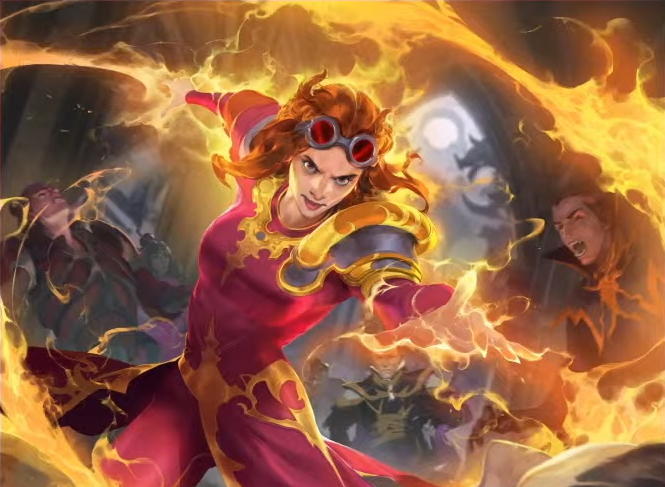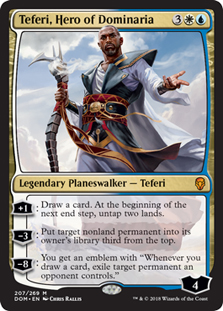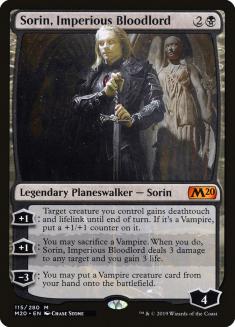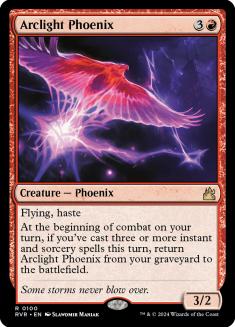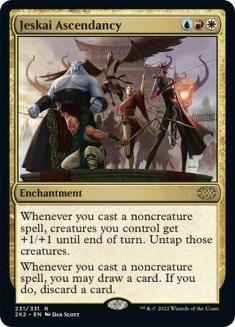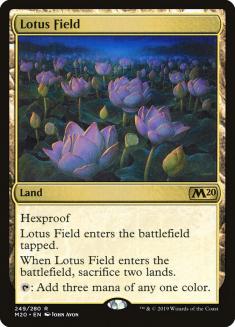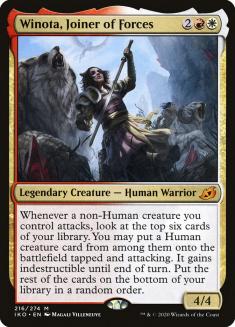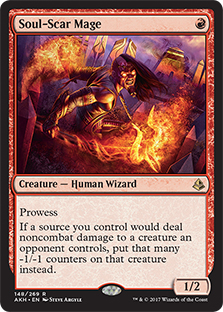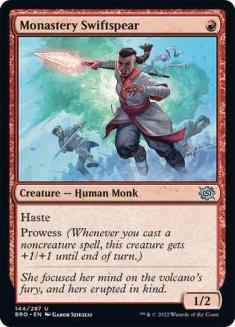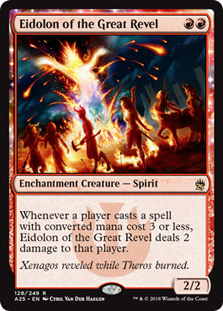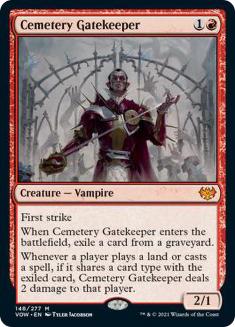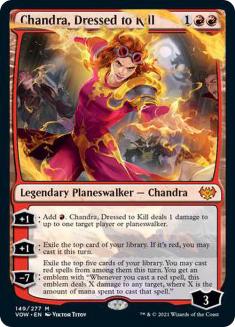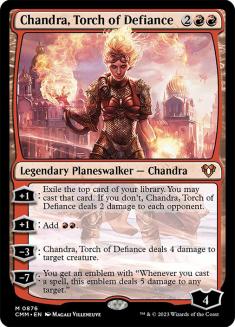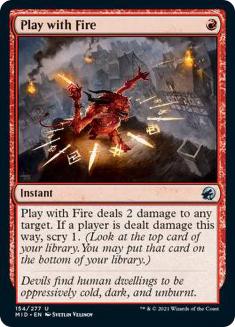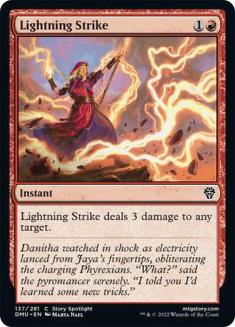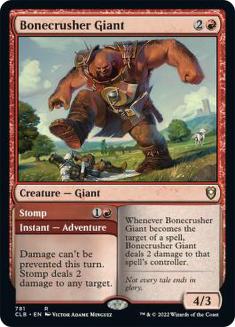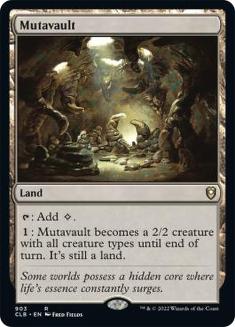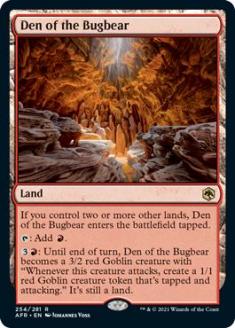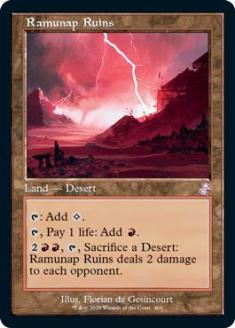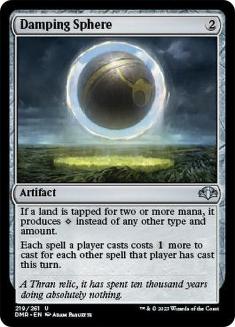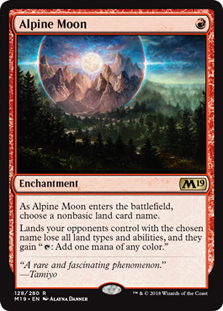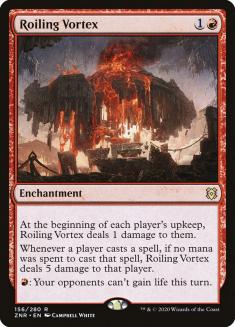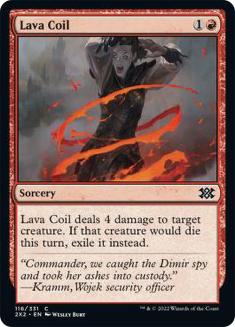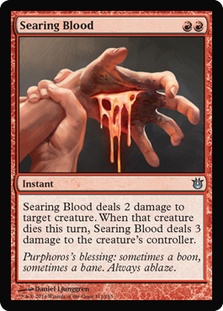Pioneer has been getting a lot of buzz over the last week. After talking with some friends about the state of Magic around New Year’s Eve, I got the gumption to start streaming again, with an emphasis on trying to kickstart a Pioneer revival. So far, so good.
When talking about the health of a format, it’s important to note a few key characteristics. For starters, is the average person having fun? That’s a tough nut to crack, specifically because players can like a wide variety of decks and gameplay. The true test, for me, is figuring out if both players are usually having a good time when they sit down to play. In the past, cards like Inverter of Truth led to quick games without a lot of ways to interact with the combo. As a result, you had one player deciphering a puzzle while the opponent tried to do everything in their power to win before the fourth turn. That’s a tall order.
When a format has one or two combo decks, that’s palatable. When it has three or four, you’re pushing it, and really need a lot of different archetypes to dilute the pool of opponents. Playing against Lotus Field and just sitting there for ten minutes while they twiddle through their whole deck is infuriating. It’s too much to ask of a human being to be a spectator for more than a minute or two during any given game, Magic or otherwise. The normalization of solitaire-style gameplay in Magic has become one of my least favorite parts of the game.
When Pioneer first started to lose traction, the top three decks were Mono-White Devotion, Dimir Inverter, and Lotus Field. Three combo decks ruled the roost, and eventually pushed the majority of the player base back to Modern and Standard. Even I, who started playing the format and made it the lion’s share of my content for months, abandoned that stale, combo-ridden format for greener pastures.
There have been a lot of changes since then, leaving Pioneer in a somewhat stable place. A few bannings happened and Wizards of the Coast (WotC) has started offering larger events on Magic Online. Just today we got an announcement that one of the three formats at SCG CON Indianapolis will be Pioneer! All of this is just to say:
The stream is back. Pioneer is back. I’m back, baby!
Pioneer’s Heavy Hitters
Pioneer is chock-full of powerful stuff, even some cards that have been deemed too powerful for other formats. Treasure Cruise is legal, and not even the best delve card! The outset of Pioneer saw the fetchlands, like Flooded Strand, get the axe. That in turn makes cards like Deathrite Shaman and Treasure Cruise palatable. So what are the best cards in Pioneer if Treasure Cruise is just good?
Teferi, Hero of Dominaria is not a new card, but it is a powerful one. Teferi was one of the best control finishers of all time, allowing you to cast it and get the instant rebate on mana for protection like removal or counterspells to keep it on the battlefield. It also has one of the most versatile interaction points of any planeswalker, answering any nonland permanent that your opponent can throw at you. Azorius Control is one of the best decks in Pioneer, and it thrives because of the raw power of Teferi, Hero of Dominaria.
Sorin, Imperious Bloodlord is the glue that holds Mono-Black Aggro together. It isn’t overwhelming, but it offers two key modes of play for the pilot: cheating Champion of Dusk onto the battlefield and pumping up your little creatures for extra damage. In a pinch, you can fling a Vampire at something or someone. For three mana, this is one of the best planeswalkers ever printed, even if it is for Vampires only.
Treasure Cruise lives in the Arclight Phoenix deck, and they certainly put it to good use. Arclight Phoenix thrives on spells that you cast in rapid succession. Doing that will often allow you to find discard outlets or more copies of Arclight Phoenix to bring to the party. I loved Arclight Phoenix in Standard, and even more in Modern with Faithless Looting. I even tried it in Legacy with Buried Alive! Most people consider Izzet Phoenix to be the best deck at the moment, but I haven’t played against it too much and most of the games are pretty good.
Our very own Dom Harvey won the Magic Online PTQ this past weekend with his take on Jeskai Ascendancy.
That combo nature of Jeskai Ascendancy can be pretty scary, but normal disruptive measures can be taken to keep it in check. Permanents that keep you from casting a ton of spells, like Deafening Silence or Eidolon of the Great Revel, can put them in a bind. Killing the Jeskai Ascendancy outright is a great way to stall out their gameplan. Even a few key discard spells and some pressure can get the job done.
In spite of all that, it remains one of the stronger decks in Pioneer, and is relatively unexplored compared to some of the other top archetypes. Dom himself said his manabase was atrocious. I don’t remember the last time I won a Magic tournament where my deck was flawed in any meaningful way, so that makes his win all the more impressive.
This combo deck centers around untapping Lotus Field multiple times in a single turn, generating extra mana in an attempt to chain effects. Pore Over the Pages is particularly gruesome here, as it acts as both a card advantage spell and mana generator spell. The fact that Lotus Field has hexproof means you can’t kill it, so the only real ways to beat the deck are to kill them before they get going or have some highly specific piece of interaction. Discard spells are traditionally a great way to knock combo down a peg, but the existence of Dig Through Time and other big draw spells means they are less effective here than in Modern or Legacy.
This is one of the more egregious cards in Pioneer, if only because it takes so little effort to get off the ground. Printing more expensive Humans like Tovolar’s Huntmaster has only made it more explosive, while cheaper Humans like Brutal Cathar increased interaction and reduced variance. You can certainly kill all the early creatures and even kill Winota before attacks, but the window for doing either is extremely tight thanks to the nature of them flooding their deck with Llanowar Elves and the like. In all honesty, if I could ban any card in Pioneer, I would ban Lotus Field. Winota is a close second, though.
Hot Knife Through Butter
When the format boils down to control, combo, and “other,” I take it upon myself to stretch as hard and far as I can into the “other” category, looking for some way to exploit the folks playing said combo and control decks. My bread-and-butter is developing and honing aggressive decks with a little disruptive package. I love playing Delver and Mono-Red with things like Eidolon of the Great Revel, both because they can punish slower opponents and because I just like beating down.
I’m not one to cry wolf or give up easily, so it irks me to no end when a combo deck or broken interaction is dominant. It is only after weeks of endlessly bashing my head against the wall that I finally break and yell, “Ban that damn thang!” We are in the former stage, and I have been picking over and playing with as many archetypes as I can. I have settled on my next project: Baby Red.
You might remember Chonky Red, a bigger version of Mono-Red featuring Glorybringer, that I popularized alongside some folks in my stream a while back. When everyone is being interactive, having larger threats to go over the top is huge, and when that interaction takes the form of counterspells, cheaper threats are key. Similarly, when combo is running rampant, cheap threats are the only things that matter. So, if this format is chock-full of combo and control decks, Mono-Red Aggro in some form or another is the way to be.
The trick to building Mono-Red correctly is finding the right suite of creatures, disruptive elements, removal, and powerful threats. Right now, Mono-Red has a lot options at virtually every mana cost, so choosing the starting list was difficult. Some cards I’ve played with that are in stock versions haven’t impressed me, while others overperformed.
Here’s my starting list:
Creatures (21)
- 4 Eidolon of the Great Revel
- 4 Monastery Swiftspear
- 1 Zurgo Bellstriker
- 4 Soul-Scar Mage
- 4 Bonecrusher Giant
- 4 Cemetery Gatekeeper
Planeswalkers (8)
Lands (24)
Spells (7)
Sideboard

Let’s break this baby down and talk about what makes it tick!
Picking the Right Threats
Against combo and control, any creature is a good creature, and the cheaper the better. Our eight one-drops are the prowess duo of Soul-Scar Mage and Monastery Swiftspear.
These are the best Pioneer has to offer, giving us bursts of damage just for killing our opponent’s creatures or casting our spells. I’m a huge fan of this duo in multiple formats, and while they’re relatively weak in Pioneer compared to Modern due to lack of free spells, they’re both excellent. Soul-Scar Mage is actually the better of the two, allowing for multiple burn spells to clobber a large creature over two turns or just making blocking impossible.
This one is a little dangerous when the format is full of aggressive decks, but that isn’t the current reality we live in. Instead, Eidolon of the Great Revel is an outrageous threat that decimates opponents who don’t have removal for it. In formats where your own life total isn’t under fire, Eidolon and other dual-sided damage effects are much worse for your opponent than for you. Don’t worry about dealing yourself damage so much! Just cast your stuff and hope it’s enough to get your opponent dead before they get you dead.
I’m not the biggest fan of Cemetery Gatekeeper but I do like a good disruptive two-drop. The stats and first strike are both solid, and the ability can occasionally soft-lock your opponent out of casting an integral spell. Your life total doesn’t matter too much most of the time, so don’t be afraid to take a card from a graveyard that could deal you a chunk of damage.
Chandra, Dressed to Kill slaps. I don’t know how else to put it. Dealing a damage to your opponent while creating a mana is pretty cool, but you don’t realize how much damage you accrue over time while also providing a substantial resource boost. With lands like Den of the Bugbear, that extra mana can translate to some spectacular turns because you actually have enough mana to cast and activate all your stuff.
You’ll get turns where you cast Chandra, make a mana, and cast a removal spell or similar to protect. The double-spell turns should be what you’re looking for at basically all times. If you cast more spells than your opponent in the first four turns, you should be at a distinct advantage. After you’ve stabilized and run out of resources, it provides you with an extra draw every turn. It doesn’t protect itself, but you can rectify that by playing a good bit of cheap removal.
I used to think this was the best iteration of Chandra ever printed, but Chandra, Dressed to Kill is giving it a run for its money. I love the fact that, for one more mana, you essentially get Chandra, Dressed to Kill with the added ability of being able to kill an opposing creature. As someone who’s played a hefty amount of Chonky Red, just know that Chandra, Torch of Defiance is better in decks with a lower curve. If Chandra, Torch of Defiance is your top-end, you’re probably in good shape. If you’re using it to scale into bigger stuff, that’s probably a result of a slower format.
Here we’re using Chandra to kill a larger creature than our other removal spells can handle. What’s left after that is a planeswalker that generates extra cards and damage. Exceptional.
Burn Baby Burn
Red decks need a little help to clear the way. The benefit of playing red is that your removal spells double as direct damage. As an aside, I’m not a huge fan of moving away from direct damage and toward “creature or planeswalker” templating for burn. Half the reason it’s relevant is because, in matchups where removal is bad, you have the ability to turn those “dead” cards into actionable resources.
Pioneer has a few decent removal spells for red, but we have nothing like Lightning Bolt. As a result, we have to make due with what we got.
This upgraded Shock is fine, but I’ve found that targeting the opponent and getting a scry is not as good or useful as it sounds. In fact, I’m confident Wild Slash will be more useful given the right circumstances, and I would absolutely play Wild Slash in a format that still had junk like Gideon of the Trials and Wilderness Reclamation plus Fog. Regardless, a one-mana removal spell is important to the success of red in any format featuring Llanowar Elves.
This one seems weak on its face, but it’s actually pretty solid. A lot of creatures randomly have three toughness as a break point, making Stomp and Play with Fire mostly useless. Lightning Strike is nothing to write home about, but it’s certainly fine. I’ve seen some folks play Mizzium Mortars and Lava Coil in the maindeck over it. To them I say, “Have you ever played against control or Den of the Bugbear?”
Stomp is actually pretty sick, but only because it’s attached to a naturally curving monster at three. Stomp into Bonecrusher Giant gives you a one-card curve that allows for interaction and pressure, a rare combination. Bonecrusher Giant was my favorite card in older versions of Chonky Red, and it’s been excellent so far in the current metagame.
Lands in Front
Lands are an important part of any deck, but for aggro you can really vibe with a creature-land or similar. In the past, I’ve said that Mutavault was the best card in Pioneer. That might not be the case anymore, but that type of land is sick for any beatdown strategy. We’re not going super-hard on them because we have so many one-mana spells, and having an opening hand with Mutavault is occasionally awkward. However, if you told me that playing four was correct, I would certainly hear you out.
I’ve likened Den of the Bugbear to Raging Ravine, but I think Den is actually better. Untapped lands in aggro are important, and a utility land that enters untapped is unmatched. Having that land also tap for the right color of mana puts it over the top. I can’t stress how good Den of the Bugbear actually is. You’ll just have to play with it yourself.
Flood protection is something I’ve discussed in the past for aggro decks, in that you need ways to use your mana after you’ve exhausted your hand. Lands that have abilities give you added life as the game goes long, and Den of the Bugbear is one of the best ever printed, if not the best.
This one got banned in Standard, but it isn’t getting banned in Pioneer anytime soon. As a land that taps for red and enters the battlefield unfettered, this utility land has very little downside to giving you some burst damage to close things out when depseration mode hits. Anyone who’s played aggro before knows that games can come down to flooding, and having lands like Ramunap Ruins and Den of the Bugbear to prevent flooding is often the difference between a “good” aggro deck and a “dominant” aggro deck.
Back to the Drawing (Side)board
If you want to dumpster a Lotus Field deck, play some Damping Spheres. With Jeskai Ascendancy increasing in popularity, you get the added benefit of dunking on them too. It won’t win the game on the spot, but this plus some pressure is sure to give them a run for their money.
Alpine Moon is for Lotus Field as well, but isn’t that good against much of anything else. I’ve split them because I like having four cards that interact with Lotus Field, but sometimes duplicates aren’t useful thanks to Blast Zone.
Control got you down? Deal them some damage and keep their lifegain in check with Roiling Vortex! Roiling Vortex: it’s basically Sulfuric Vortex…but worse! As a red mage, this one checks a lot of my boxes, and you don’t have to be as strong as one of the most iconic red cards ever printed to be good.
Four damage for two mana is the sweet spot, but the exile effect on top makes me pick this over any of the other options. If you need to up your removal count against an aggressive opponent, more virtual Shocks like Flame-Blessed Bolt just doesn’t cut it. You gotta kill the bigger opposing creatures!
Since we’re lower to the ground, the extra damage can seriously mess up an opponent trying to spray their creatures onto the battlefield. I’m worried that Searing Blood might not be good enough, as the most popular deck that it would be great against is Winota, and having one-mana removal would be slightly better. I’ll be looking for a middle ground, but here’s where I am now.
Final Thoughts
Pioneer is in a pretty good place, but some of the games are a little lopsided. One thing I appreciate about the lopsided games is that they’re over quickly, and we can just play again. It’s losing in a landslide over the course of 30 minutes that I truly despise, and I will advocate removing cards and elements that encourage or force that at virtually all times.
In the past, Pioneer has been excellent to miserable, depending on what’s banned and what’s legal at any given time. Recent design philosophy has had a dramatic impact on bigger formats, meaning those cards were absolutely a mistake if they were dominant in such a large card pool. Something has to be “the best,” but the best doesn’t have to create landslide games or generate one-sided play experiences. If interaction is good, the format is usually good.
I’ve been playing Pioneer a lot over the last few days, and will continue doing so until I get frustrated or Modern piques my interest. If Pioneer is something you think you’d be interested in, or just want to follow my journey of exploring this relatively unexplored format, you can find me streaming around noon ET on weekdays.
See you there!

